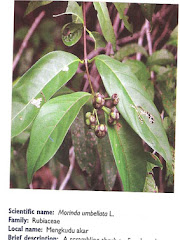Guidelines for Protected Area Management Categories
Basic Concepts
The starting point must be a definition of a protected area. The definition adopted is derived from that of the workshop on Categories held at the IVth World Congress on National Parks and Protected Areas:
An area of land and/or sea especially dedicated to the protection and maintenance of biological diversity, and of natural and associated cultural resources, and managed through legal or other effective means.
This definition embraces the 'universe' of protected areas. All categories must fall within this definition. But although all protected areas meet the general purposes contained in this definition, in practice the precise purposes for which protected areas are managed differ greatly. The following are the main purposes of management:
Scientific research
Wilderness protection
Preservation of species and genetic diversity
Maintenance of environmental services
Protection of specific natural and cultural features
Tourism and recreation
Education
Sustainable use of resources from natural ecosystems
Maintenance of cultural and traditional attributes
Having regard to the different mix and priorities accorded to these main management objectives, the following emerge clearly as distinct categories of protected areas:
Areas managed mainly for:
I Strict protection (i.e. Strict Nature Reserve / Wilderness Area)
II Ecosystem conservation and recreation (i.e. National Park)
III Conservation of natural features (i.e. Natural Monument)
IV Conservation through active management (i.e. Habitat/Species Management Area)
V Landscape/seascape conservation and recreation (i.e. Protected Landscape/Seascape)
VI Sustainable use of natural ecosystems (i.e. Managed Resource Protected Area)
However, most protected areas also serve a range of secondary management objectives.
The relationship between management objectives and the categories is illustrated in matrix form in the table below. It is developed further in Part II, where each category is described, and through a range of examples presented in Part III.
This analysis is the foundation upon which the international system for categorising protected areas was developed by IUCN and which is presented in these guidelines. There are several important features to note:
the basis of categorisation is by primary management objective;
assignment to a category is not a commentary on management effectiveness;
the categories system is international;
Table Matrix of management objectives and IUCN protected area management categories
MANAGEMENT OBJECTIVE
Ia
Ib
II
III
IV
V
VI
Scientific research
1
3
2
2
2
2
3
Wilderness protection
2
1
2
3
3
-
2
Preservation of species and genetic diversity
1
2
1
1
1
2
1
Maintenance of environmental services
2
1
1
-
1
2
1
Protection of specific natural/cultural features
-
-
2
1
3
1
3
Tourism and recreation
-
2
1
1
3
1
3
Education
-
-
2
2
2
2
3
Sustainable use of resources from natural ecosystems
-
3
3
-
2
2
1
Maintenance of cultural/traditional attributes
-
-
-
-
-
1
2
Key:
1 Primary objective
2 Secondary objective
3 Potentially applicable objective
- Not applicable
national names for protected areas may vary;
a new category is introduced;
all categories are important;
but they imply a gradation of human intervention.
These points are discussed in turn.
The Basis of Categorisation is by Primary Management Objective
In the first instance, categories should be assigned on the basis of the primary management objective as contained in the legal definitions on which it was established; site management objectives are of supplementary value. This approach ensures a solid basis to the system, and is more practical. In assigning an area to a category, therefore, national legislation (or similar effective means, such as customary agreements or the declared objectives of a non-governmental organization) will need to be examined to identify the primary objective for which the area is to be managed.
Assignment to a Category is not a Commentary on Management Effectiveness
In interpreting the 1978 system, some have tended to confuse management effectiveness with management objectives. For example, some areas which were set up under law with objectives appropriate to Category II National Parks have been reassigned to Category V Protected Landscapes because they have not been protected effectively against human encroachment. This is to confuse two separate judgements: what an area is intended to be; and how it is run. IUCN is developing a separate system for monitoring and recording management effectiveness; when complete, this will be promoted alongside the categories system, and information on management effectiveness will also be collected and recorded at the international level.
The Categories System is International
The system of categories has been developed, inter alia, to provide a basis for international comparison. Moreover, it is intended for use in all countries. Therefore the guidance is inevitably fairly general and will need to be interpreted with flexibility at national and regional levels. It also follows from the international nature of the system, and from the need for consistent application of the categories, that the final responsibility for determining categories should be taken at the international level. This could be IUCN, as advised by its CNPPA and/or the World Conservation Monitoring Centre (e.g., in the compilation of the UN List) in close collaboration with IUCN.
National Names for Protected Areas may Vary
In a perfect world, IUCN's system of categories would have been in place first, and national systems would have followed on, using standard terminology. In practice, of course, different countries have set up national systems using widely varying terminology. To take one example, 'national parks' mean quite different things in different countries. Many nationally-designated 'national parks' do not strictly meet the criteria set by Category II under the 1978 system. In the United Kingdom, for example, 'National Parks' contain human settlement and extensive resource use, and are properly assigned to Category V. In South America, a recent IUCN study found that some 84 percent of national parks have significant resident human populations; some of these might be more appropriately placed in another category.
Since so much confusion has been caused by this in the past, Part II of these guidelines identifies the categories by their main objectives of management as well as their specific titles. Reference is also made to the titles used in the 1978 system because some, at least, have become widely known.
At the national level, of course, a variety of titles will continue to be used. Because of this, it is inevitable that the same title may mean different things in different countries; and different titles in different countries may be used to describe the same category of protected area. This is all the more reason for emphasising an international system of categorisation identified by management objectives in a system which does not depend on titles.
A New Category is Introduced
The Recommendation adopted at Caracas invited IUCN to consider further the views of some experts that a category is needed to cover predominantly natural areas which "are managed to protect their biodiversity in such a way as to provide a sustainable flow of products and services for the community". Consideration of this request has led to the inclusion in these guidelines of a category where the principal purpose of management is the sustainable use of natural ecosystems. The key point is that the area must be managed so that the long-term protection and maintenance of its biodiversity is assured. In particular, four considerations must be met:
the area must be able to fit within the overall definition of a protected area (see above),
at least two-thirds of the area should be, and is planned to remain in its natural state,
large commercial plantations are not to be included, and
a management authority must be in place.
Only if all these requirements are satisfied, can areas qualify for inclusion in this category.
All Categories are Important
The number assigned to a category does not reflect its importance: all categories are needed for conservation and sustainable development. Therefore IUCN encourages countries to develop a system of protected areas that meets its own natural and cultural heritage objectives and then apply any or all the appropriate categories. Since each category fills a particular 'niche' in management terms, all countries should consider the appropriateness of the full range of management categories to their needs.
...But they imply a Gradation of Human Intervention
However, it is inherent in the system that the categories represent varying degrees of human intervention. It is true that research has shown that the extent of past human modification of ecosystems has in fact been more pervasive than was previously supposed; and that no part of the globe can escape the effects of long-distance pollution and human-induced climate change. In that sense, no area on earth can be regarded as truly 'natural'. The term is therefore used here as it is defined in Caring for the Earth:
Ecosystems where since the industrial revolution (1750) human impact (a) has been no greater than that of any other native species, and (b) has not affected the ecosystem's structure. Climate change is excluded from this definition.
Under this definition, categories I to III are mainly concerned with the protection of natural areas where direct human intervention and modification of the environment has been limited; in categories IV, V and VI significantly greater intervention and modification will be found.
أَلَمْ تَرَ أَنَّ اللَّهَ يُسَبِّحُ لَهُ مَنْ فِي السَّمَاوَاتِ وَالأرْضِ وَالطَّيْرُ صَافَّاتٍ كُلٌّ قَدْ عَلِمَ صَلاتَهُ وَتَسْبِيحَهُ وَاللَّهُ عَلِيمٌ بِمَا يَفْعَلُونَ Tidakkah kamu tahu bahwasanya Allah: kepada-Nya bertasbih apa yang di langit dan di bumi dan (juga) burung dengan mengembangkan sayapnya. Masing-masing telah mengetahui (cara) solat dan tasbihnya, dan Allah Amat Mengetahui apa yang mereka kerjakan. an-Nur:41
Tazkirah
Sami Yusuf_try not to cry
mu'allim Muhammad Rasulullah Sallallahu alaihi waSalam
ummi_mak_mother_ibu_Sami Yusuf
zikir Tok Guru Nik Abdul Aziz Nik Mat Mu'allimul Mursyidi
syeikh masyari afasi
ruang rindu
song
Arisu Rozah
Usia 40

Mudah mudahan diluaskan rezeki anugerah Allah
usia 40 tahun

UPM

Kuatan Pahe Darul Makmur
pemakaian serban semsa menunaikan solat_InsyaAllah ada sawaaban anugerah Allah
Rempuh halangan

Abah_menyokong kuat oengajian Ijazah UPM

usia 39 tahun

usia 23 tahun_UPM
An_Namiru

Ijazah Pengurusan Hutan UPM

General Lumber_Nik Mahmud Nik Hasan

Chengal

Tauliah

Semasa tugas dgn general lumber

PALAPES UPM

UPM

Rumah yang lawa

Muhammad_Abdullah CD
semasa bermukim di Kuatan Pahe Darul Makmur
Ijazah

air terjun

Borneo land

GREEN PEACE
GREEN PEACE
Kelang

Ahlul Bayti_ Sayid Alawi Al Maliki

Asadu_ Tenang serta Berani

atTiflatul Falasthiniin

Sayid Muhammad Ahlul Bayt keturunan Rasulullah

AnNamiru_SAFARI_Kembara

AnNamiru_resting

Hamas

sabaha anNamiru fil nahri

Namir sedang membersih

Tok Guru Mualimul_Mursyid

An_Namiru
.jpg)
Namir_istirehat
.jpg)
SaaRa AnNamiru fil_Midan
.jpg)
Renungan Sang Harimau_Sabaha AnNamiru
.jpg)
Syaraba AnNamiru Ma_A
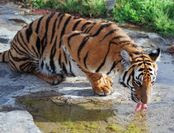.jpg)
AnNamiru_Riadhah
.jpg)
AnNamiru_Riadhah
.jpg)
AnNimru ma_A waladuha
Namir fil_Ghabi (sebut Robi...
Namir

AdDubbu_Beruang di hutan

Amu Syahidan Wa La Tuba lil_A'duwwi

AsSyahid

Namir

Tangkas
najwa dan irah

sungai

najwa

najwa

Kaabatul musyarrafah

unta

Jabal Rahmah

masjid nabawi

masjid quba

dr.eg

najwa dan hadhirah

along[macho]
![along[macho]](https://blogger.googleusercontent.com/img/b/R29vZ2xl/AVvXsEjuMi7D33CmR0_KXrCW2XigfLcUuQurcvtqOS139ncCwEzCyB-jUopk7QK7anADIenJEm2S0N6gAY1ubnACYXewgiAsI3rBjnLTawM39alLL-rEopOoVqn0w5WpLhPJH3hrXNtchEhgtyaI/s240/P7150023.JPG)
harissa dan hadhirah

adik beradik
Tongkat Ali

Tongkat Ali
herba kacip Fatimah
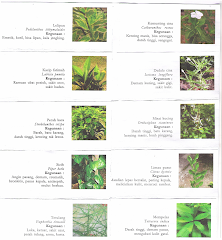
herba Kacip Fatimah
hempedu beruang
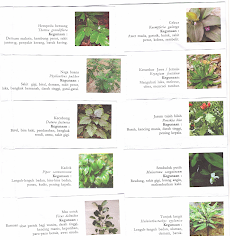
hempedu beruang
hempedu bumi

hempedu bumi
herba misai kucing

herba misai kucing
herba tongkat Ali
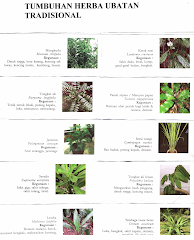.png)
Tongkat Ali
Ulama'

Ulama'
kapal terbang milik kerajaan negara ini yang dipakai pemimpin negara

kapal terbang
Adakah Insan ini Syahid

Syahid
Tok Ayah Haji Ismail

Saifuddin bersama Zakaria

Dinner....
Sukacita Kedatangan Tetamu
Pengikut
Kalimah Yang Baik

Ubi Jaga

Ubi Jaga
Arkib Blog
Burung Lang Rajawali

Chinese Sparrowhawk
Kelicap Mayang Kelapa
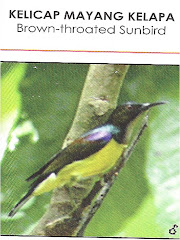
Brown-Throated Sunbird
Kopiah

Pokok Damar Minyak

Kacip Fatimah
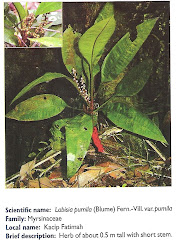
Mengkudu Akar
